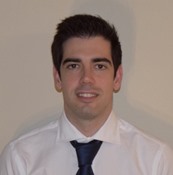Streamlining Complex Multi-Isocentric VMAT Based Treatment Delivery Using a Newly Developed Software Tool
J Teruel*, P Galavis, K Osterman, S Taneja, B Cooper, N Gerber, C Hitchen, D Barbee, NYU Langone Health, New York, NY
Presentations
WE-IePD-TRACK 6-6 (Wednesday, 7/28/2021) 5:30 PM - 6:00 PM [Eastern Time (GMT-4)]
Purpose: Multi-isocentric treatment delivery for CSI and TBI poses specific challenges for treatment delivery. We have developed a software tool to streamline all aspects of delivery for therapists and physicists at the machine, as well as to inform attending physicians of setup variability and image residuals at different locations.
Methods: Our institution delivers VMAT-based CSI and TBI with up to 3 and 7 isocenters, respectively. A software tool was developed to assist with treatment delivery including initial patient setup, patient imaging, automatic calculation of the optimal global shift based on each isocenter’s ideal shift, and automatic calculation of each isocenter’s couch coordinates. Initial treatment couch coordinates are queried via the Eclipse scripting API. The global shift was calculated prioritizing the head isocenter for CSI treatments and the chest isocenter for TBI treatments by first maximizing residual tolerance at any other location prior to accepting any residual deviation at these locations. Maximum residuals tolerance was determined based on target margins, plan uncertainty and as per physician instructions. Delivery parameters are reported to a document uploaded to ARIA via API.
Results: The developed tool was employed for 11 cases. The software tool replaced the need for plan shift comments or instructions for therapists. In particular, its use eliminated the need to provide isocenter shifts to therapists by directly providing final couch parameters for treatment, greatly reducing the risk of delivery errors. The software effectively informed the therapists if any expected tolerance was surpassed, triggering a patient setup evaluation.
Conclusion: The described software tool is a core component to our multi-isocenter treatment programs and has streamlined delivery of these complex techniques that would otherwise require complicated instructions, including multiple shifts and on-the-fly calculations of optimal image alignment based on multiple imaging locations. This has substantially reduced the possibility of delivery errors.
Funding Support, Disclosures, and Conflict of Interest: Honorarium from Varian Medical Systems (Jose Teruel) Honorarium from Sun Nuclear Corporation (David Barbee)
ePosters
Keywords
Treatment Techniques, Software, Image-guided Therapy
Taxonomy
TH- External Beam- Photons: General (most aspects)
Contact Email



